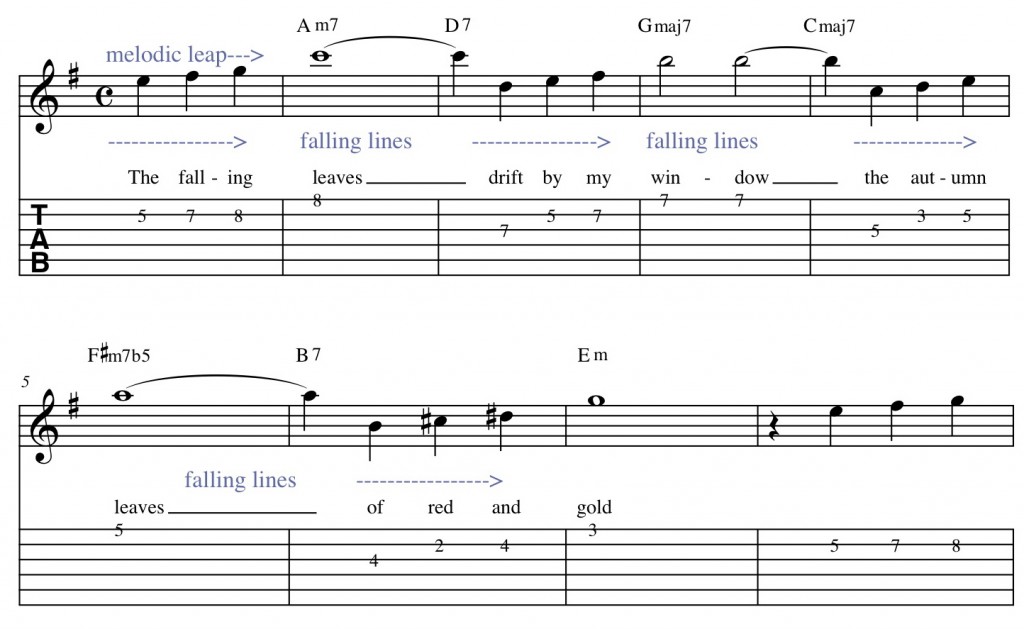For you theory buffs out there I thought I’d like to talk a bit about the structure of the chord progression of Autumn Leaves. The progression of the song follows a pattern of ascending 4ths. What I mean by this is that from the first chord, Am we move to D7. D is 4 steps away from A in the G major scale, the song is in the key of G major (relative minor scale – Em). From D7 we move to G, again 4 scale steps, and then from G to Cmaj7, again 4 scale steps. With a couple of exceptions this is the pattern followed right through the song. The result is that we have progression of great symmetry and balance……maybe comparable to the growth structure of those falling leaves ? Discuss
Archives for February 2012
Learning Songs – Autumn Leaves Melody
Looking at the melody of Autumn leaves, I love the melodic leap write at the pick up. It really grabs your attention. Go back to the previous blog and listen to the way Eva Cassidy embellishes the high note giving it even more energy and tension. The melody as written below is the original melody of the song. Again, listen to the way Eva Cassidy plays with the melody, keeping the central flavour of the melody while at the same time putting her own stamp on it. You can see from the notation below (even if you don’t read notation you’ll still get the idea of the shape of the musical lines) that after the initial leap there is a series of 3 note rising lines that gently fall through the next 8 measures….. a bit like those falling leaves ?
Learning Guitar Songs – Autumn leaves
As I do, I was trolling about the internet looking for versions of Autumn Leaves that could help inspire my arrangement and I’ve got to say this version by Eva Cassidy is definitely up there
Autumn Leaves Guitar Lesson Measures 5-8
Moving onto measures 5-8 we have F#m7b5 going to B7 and onto Em. Arranged in the key of G (relative minor key Em), in measures 7&8 the melody comes to rest on Em.
Andres Segovia’s Right Hand Technique
As fingerstyle guitarists we can learn a lot from the technique of classical guitarists. There are some great close ups in the clip below of Andres Segovia’s right hand fingerstyle technique. Segovia was one of the first classical guitarists to pluck the strings with a combination of fingernails and fingertips. Playing in this manner gave him a wider range of timbres. Often by concentrating on holding down chord shapes with the left hand we forget about what the right hand is doing. Don’t fall into that trap and don’t be put off by Segovia’s virtuoso playing….I have some basic right hand technique tips in my free introductory course !
